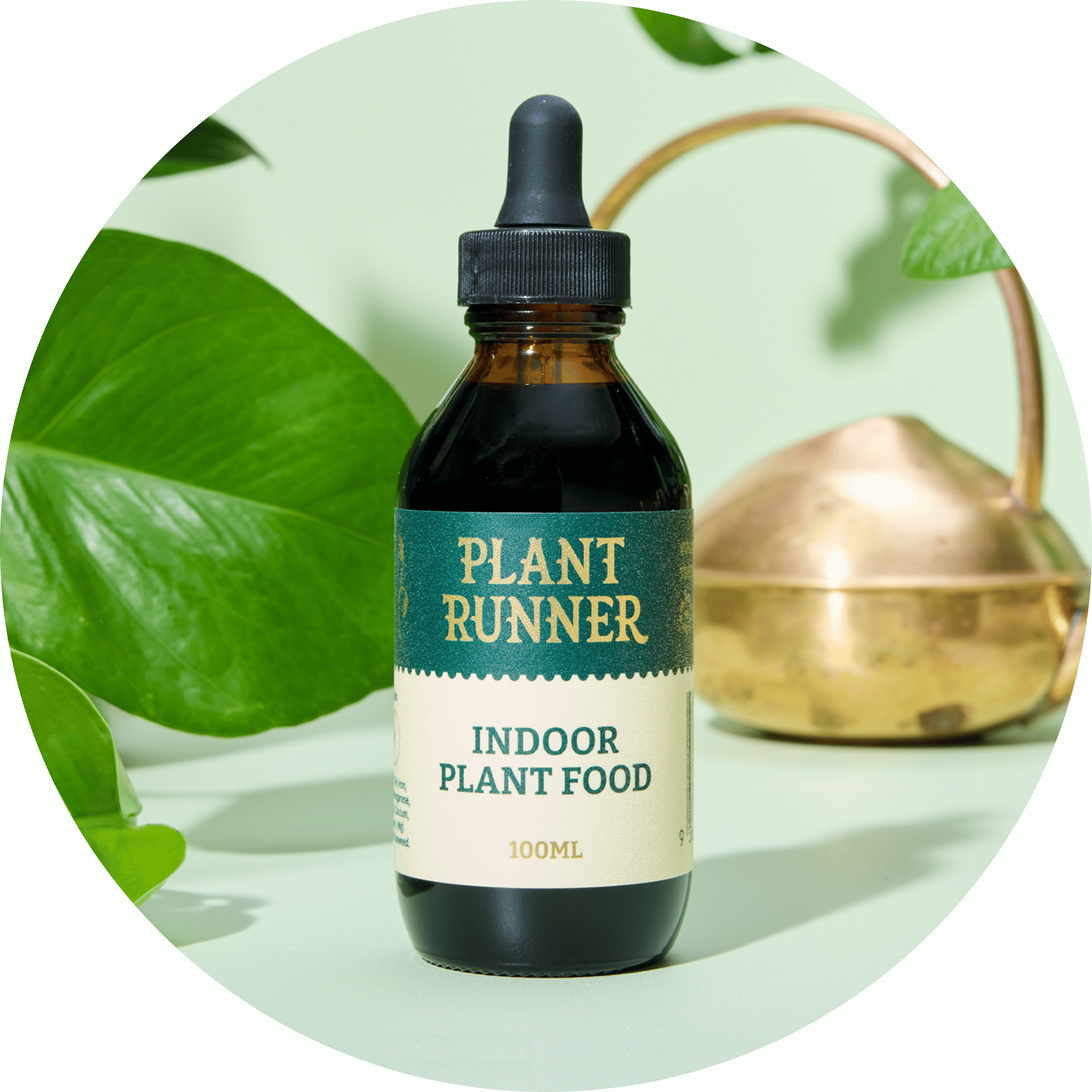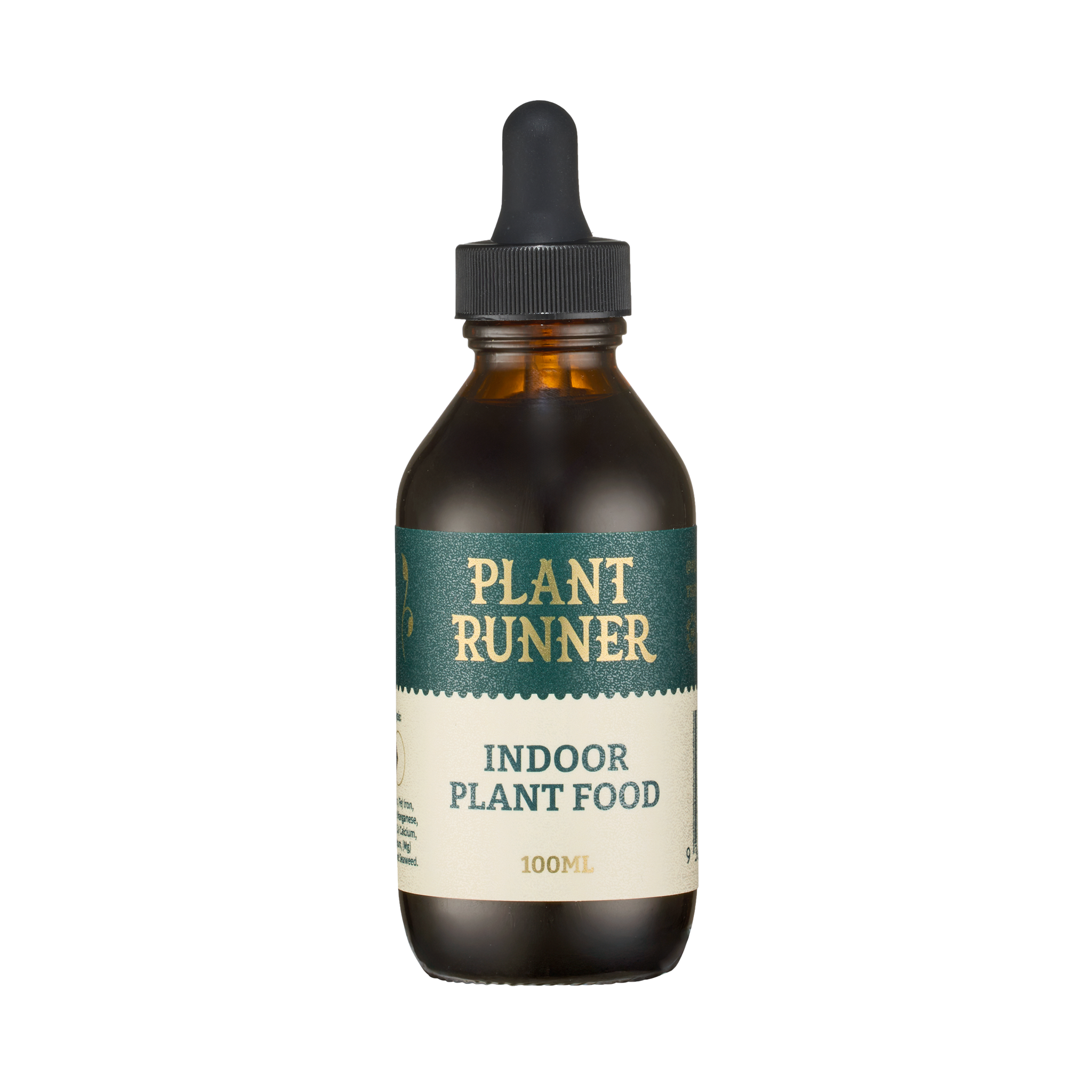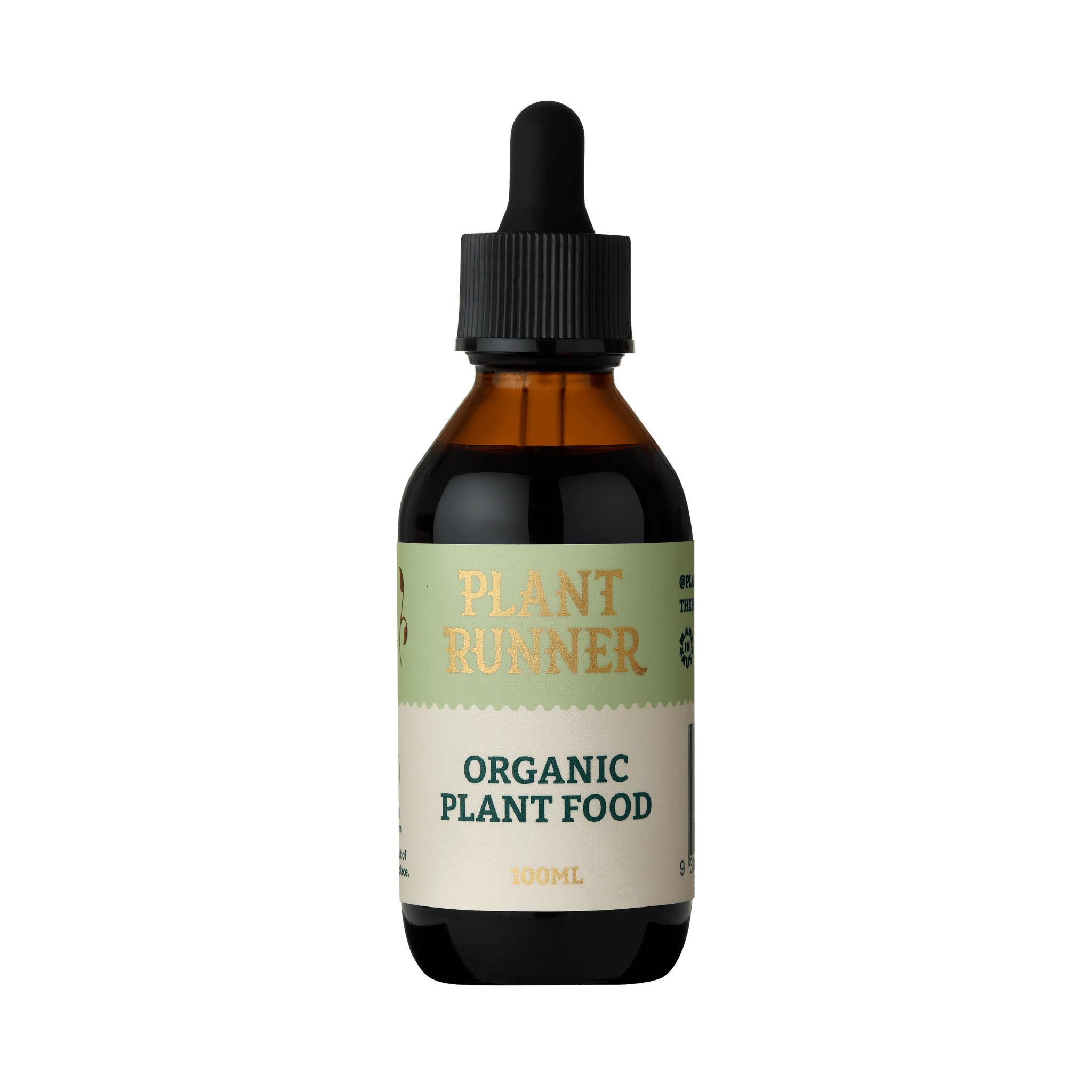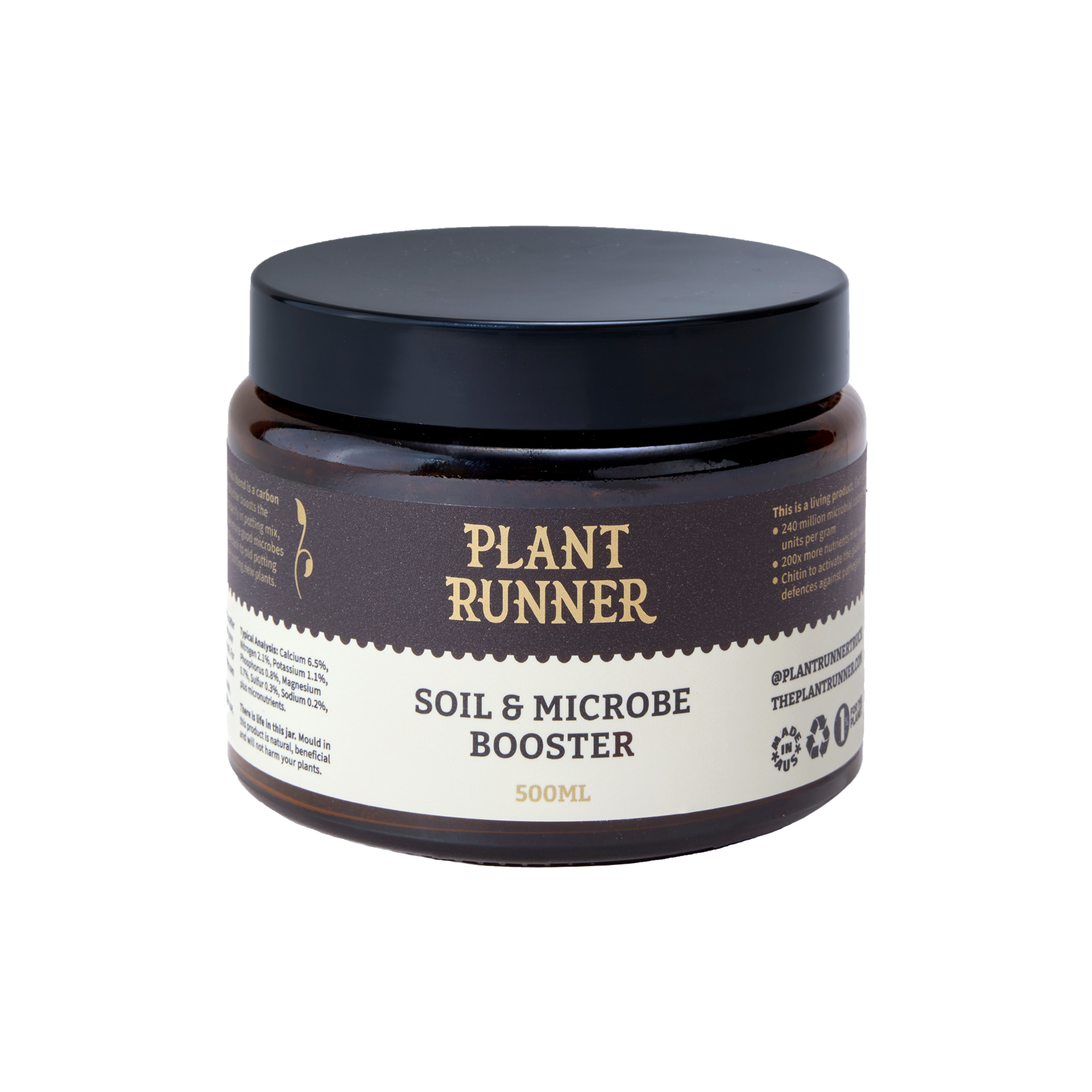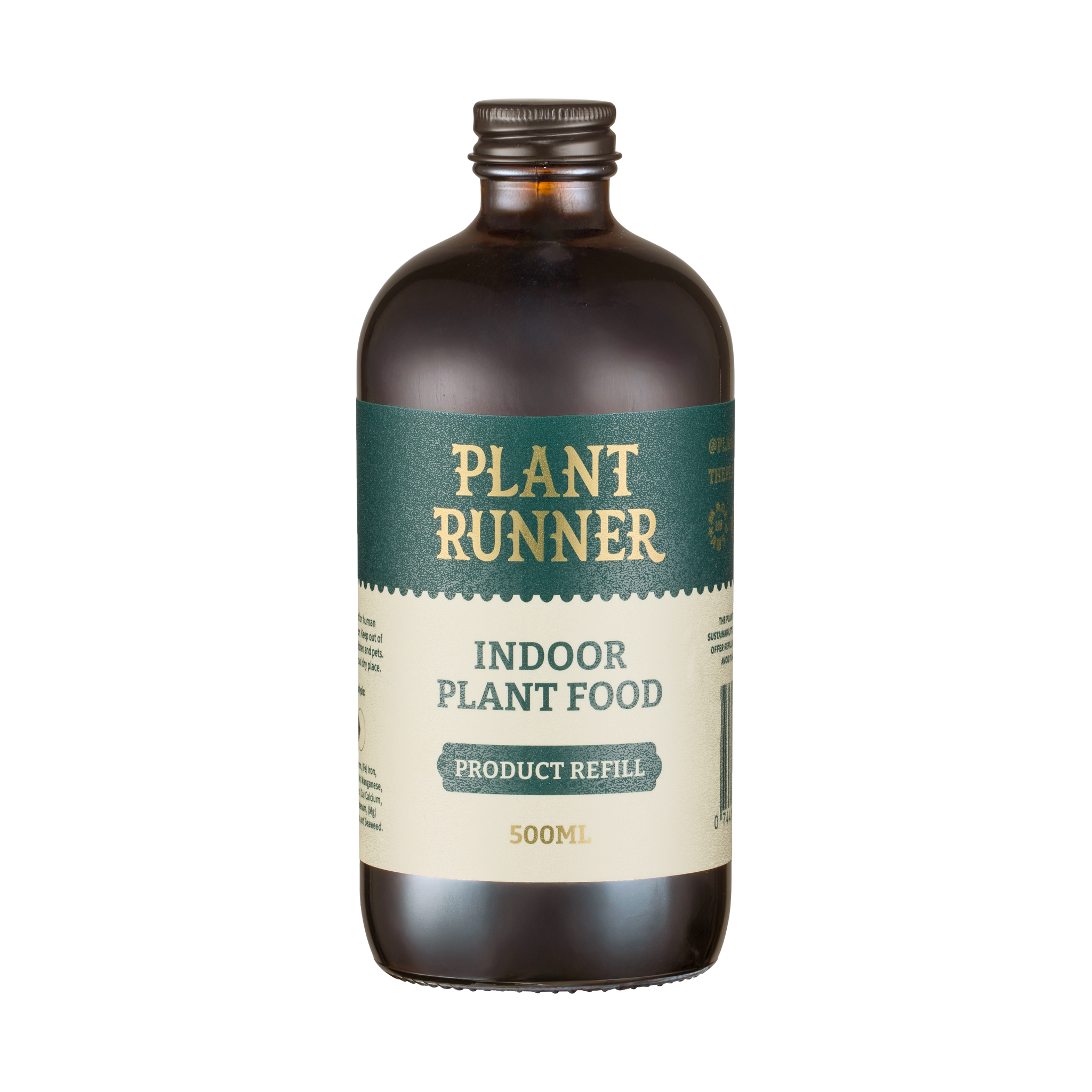Understanding Fertilisers
Plants make their own energy through photosynthesis, but they still rely on external nutrition to build structure, sustain growth, and recover from stress. That’s where fertilisers come in. A fertiliser isn’t “food” in the human sense — it’s a delivery system for the essential nutrients that fuel growth. And not all fertilisers are created equal.
Our approach is professional-grade, precision-engineered plant nutrition. Our blends are designed the way horticulturists and growers feed their collections: calibrated ratios, consistent absorption, and measurable outcomes. This makes them more effective than general-purpose feeds, and it’s why results are visible sooner. The trade-off is that they require a little more care and precision — but that’s exactly what makes them advanced.
How Different Ratios Affect Growth
Different balances of N, P and K push plants in different directions. Choosing the right fertiliser means matching the ratio to your plant’s growth stage or goal.
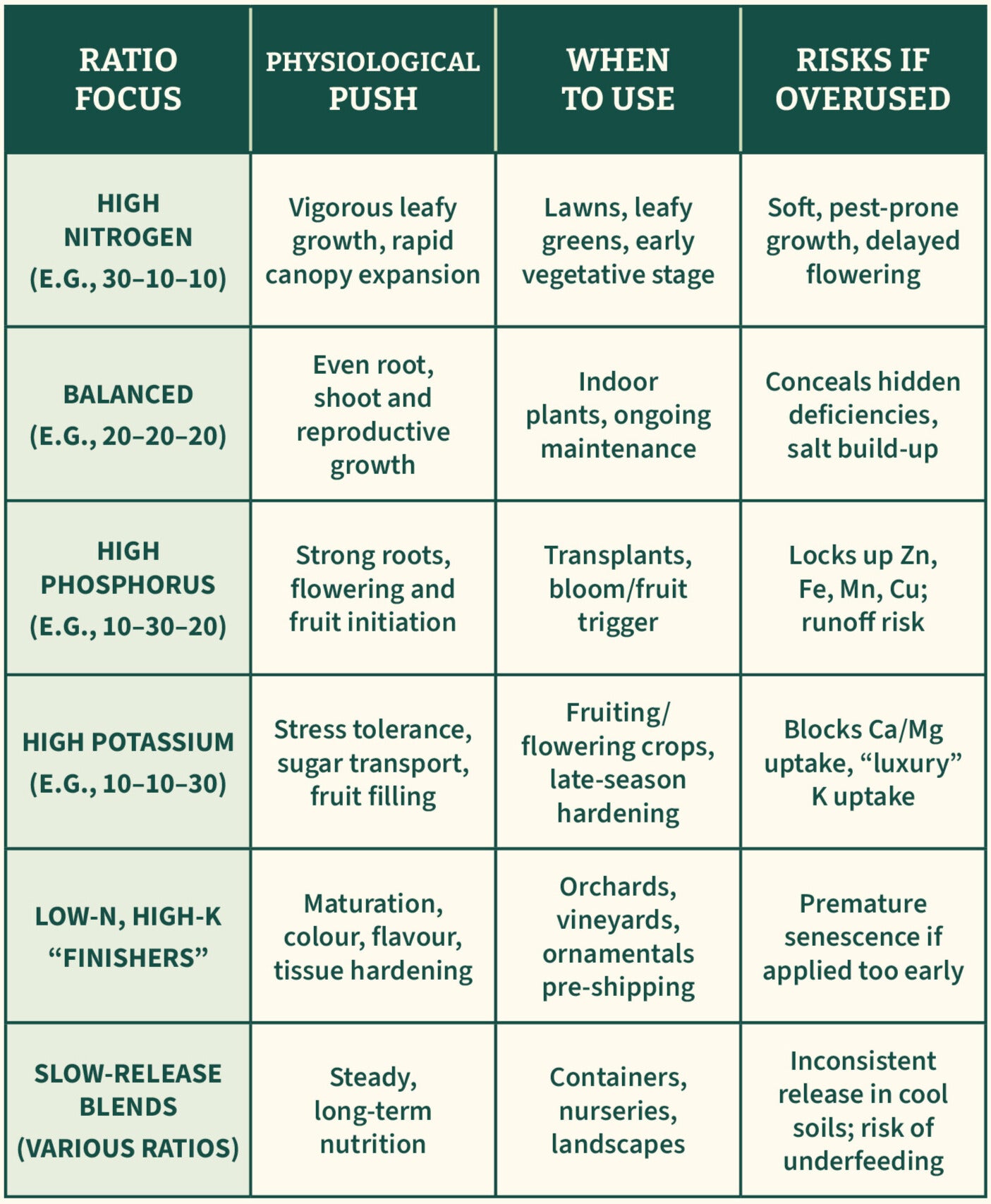
Beyond the Big Three: Micronutrients
A truly advanced fertiliser doesn’t stop at NPK. Plants also require calcium, magnesium, sulphur, and a suite of trace elements — boron, manganese, iron, zinc, copper, molybdenum. Even in small amounts, these dictate plant health: yellowing leaves, distorted growth, or poor flowering often trace back to micronutrient deficiencies.
Many generic fertilisers skip these, focusing on bulk macronutrients. Our formulations integrate micros into every feed, ensuring a complete, balanced nutrition profile. That’s what elevates them to comprehensive plant nutrition systems.
Fertiliser Types – Choosing the Right Tool
Not all fertilisers are created equal. Each has a role:
- Organic fertilisers → Natural, gentle, and soil-building. They release nutrients slowly and support microbial health, making them perfect for long-term soil care and steady growth. They’re excellent for gardeners who prioritise sustainability and gentle, ongoing nutrition.
- Slow-release pellets → Convenient, but release rates vary with temperature and moisture. They’re good for consistent background feeding, but growth responses are slower and less predictable. Can come in synthetic or organic forms
- Advanced liquid concentrates → Precision-engineered for maximum control and measurable impact. Every millilitre delivers a calibrated ratio of macro- and micronutrients. This is professional-grade feeding — fast, reliable, and adjustable to your plant’s species, growth stage, and environmental conditions.
Advanced vs. Organic Fertiliser
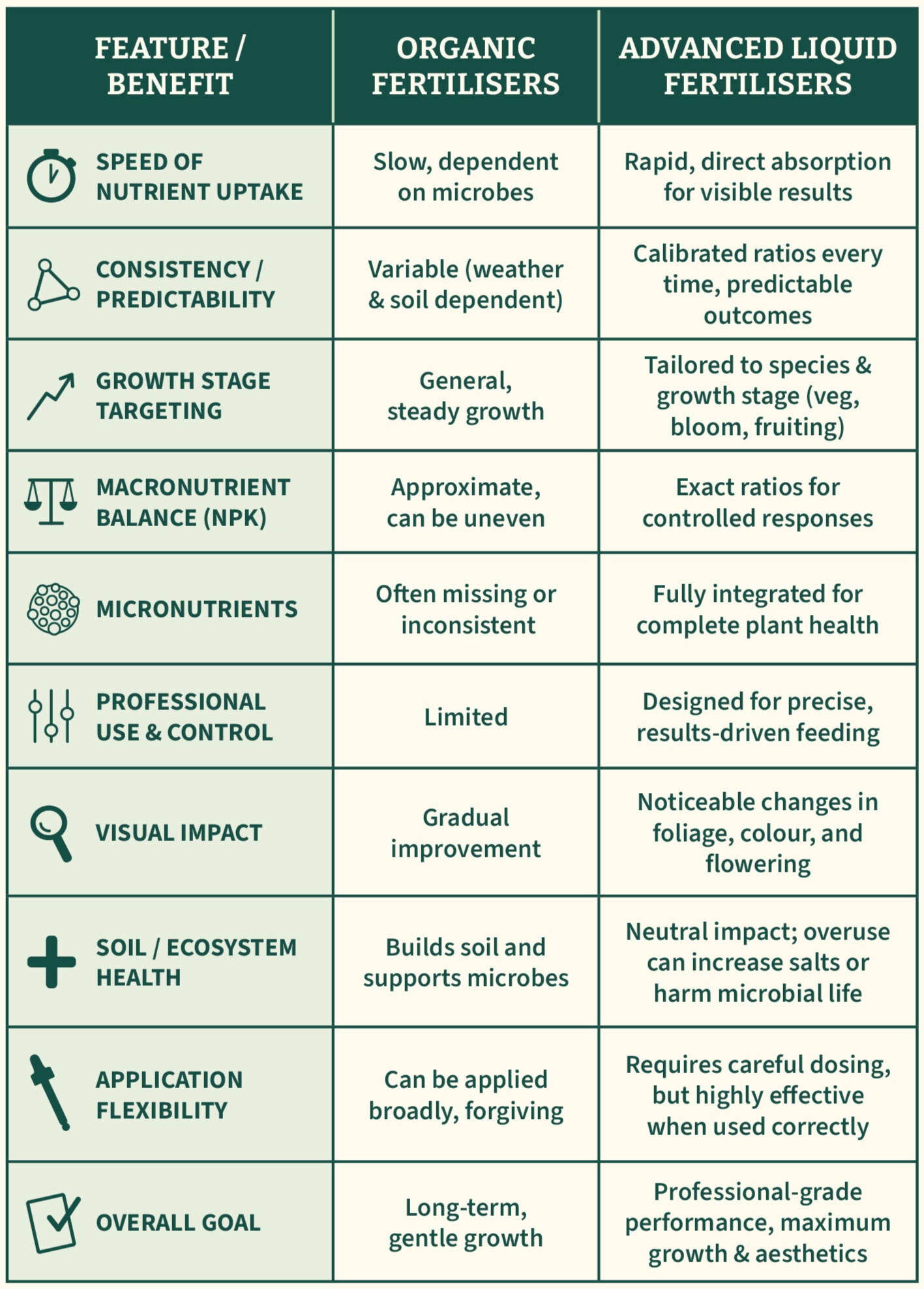
Often, the best strategy is a combination: advanced liquid fertilisers for immediate needs and slow-release options for long-term support.
Feeding by Growth Stage
Advanced liquid fertilisers let you tailor feeding to your plant’s lifecycle:
- Establishment / Early Growth → Higher phosphorus to promote strong root systems.
- Vegetative Growth → Higher nitrogen to fuel lush leaves and canopy expansion.
- Flowering / Fruiting → Shift toward potassium to strengthen tissue and improve flower and fruit quality.
- Maintenance / Hardening → Balanced formulas with micros to sustain health and resilience.
By aligning feeding with the growth stage, you give your plants exactly what they need, when they need it, instead of guessing.
Local Considerations
- Australian natives are often phosphorus-sensitive. Always choose low-P blends (<3% P) for grevilleas, banksias and other Proteaceae to avoid toxicity.
- Seasonal feeding: In cooler climates (like Melbourne), growth slows in autumn/winter — ease back on high-N fertilisers and switch to slower, gentler feeding.
- Potting mixes: Many premium mixes already contain controlled-release fertilisers, but their release slows in cool weather and may not last more than 2–3 months. Always supplement.
Our Approach
At The Plant Runner, our fertilisers are:
- Expert formulated — designed by horticulturists, not just blended for marketing.
- Balanced and complete — with both macros and essential micros.
- Planet-conscious — refill-ready and packaged with sustainability in mind.
- Easy to use — whether you prefer quick liquid feeds or slow-release solutions.
We don’t believe in pushing plants harder than they want to grow. Fertilising is about giving them what they need, when they need it, so they can thrive naturally. The result? Healthier foliage, stronger roots, brighter flowers and more resilient plants. And if you’re still not sure, we’re always available to help guide you in the right direction.
Key Takeaways
- Fertiliser = nutrients, not food.
- Ratios (NPK) dictate growth response; concentration controls speed.
- Micronutrients are essential for flowering, colour, and tissue strength.
- Match your feed to the growth stage and environment for best results.
- Advanced fertilisers deliver professional-grade results — predictable, measurable, and responsive.
- Organic and slow-release products are valuable too, but offer a gentler, slower approach; advanced blends give control and performance.
Feed smart, not hard — and your plants will reward you.



